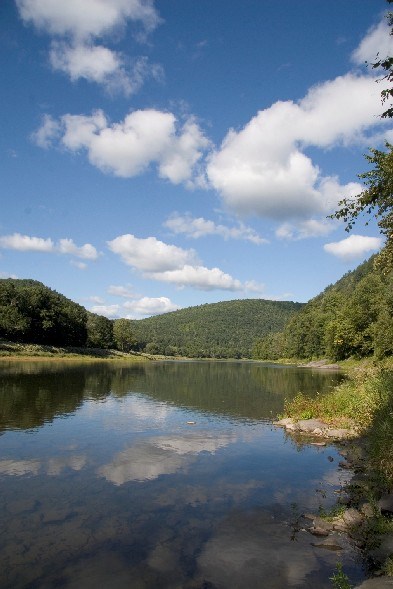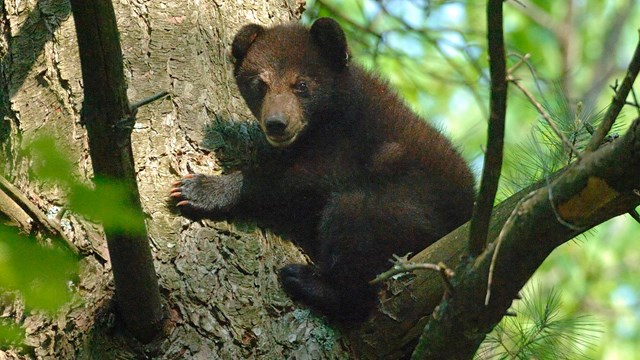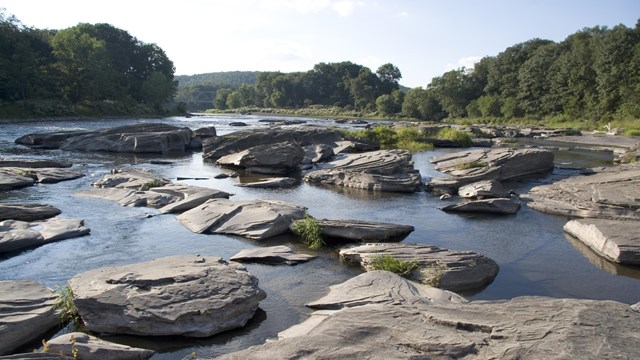
David B. Soete The Delaware River is one of the last large free-flowing rivers left in the contiguous 48 states, and one of the last major rivers without any dams or control structures on its main stem. It is the longest undammed river east of the Mississippi and extends 330 miles downstream from the confluence of the East and West branches in Hancock, New York to the mouth of the Delaware Bay where it empties into the Atlantic Ocean. The river is fed by 216 tributaries, the largest being the Schuylkill and Lehigh Rivers in Pennsylvania. In all, the basin contains 13,539 square miles. More than 180 miles of the 330-mile-long Delaware River have been placed into the National Wild and Scenic Rivers System; this includes all 73.4 miles of Upper Delaware Scenic and Recreational River. 
Animals
The Delaware River and its banks are feeding grounds for many animals. Muskrat, mink, raccoon, and snapping turtle are the most common. 
Environmental Factors
The Delaware River is considered to be a river of exceptional water quality and the park works hard to keep it that way. 
Natural Features & Ecosystems
The biological diversity coupled with the low levels of pollution contribute to the high quality of life and scenic value of the valley. 
Protecting Parks Through Science
Learn more about natural resource monitoring at Upper Delaware Scenic and Recreational River. |
Last updated: March 26, 2025
